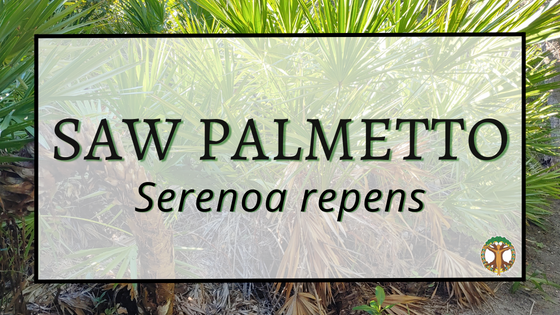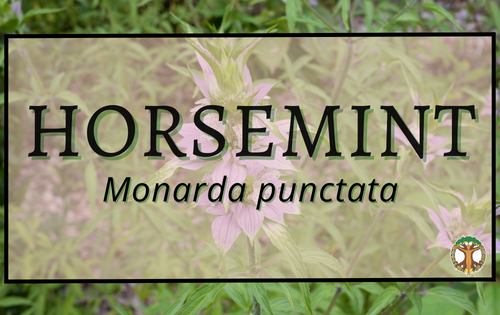
Saw Palmetto
Contributor: Maggie Smartt
Latin Name: Serenoa repens
Common Names: Saw palmetto
Family: Arecaceae
Habitat: S. repens is endemic to the subtropical and tropical Southeastern United States, making Florida a happy home for saw palmetto. It is common along the coast and in the understory of pine woodlands and hardwood hammocks.
Parts Used: Berries
⚠️ Note About Foraging in Florida: Effective July 2018, the Florida Department of Agriculture and Consumer Services (FDACS) requires a permit to harvest and sell saw palmetto berries in Florida. The Endangered Plant Advisory Council unanimously recommended adding saw palmetto to the FDACS commercially exploited plant list. To learn more about requirements and to apply for a permit visit -> fdacs.gov/Agriculture-Industry/Plant-Industry-Permits/Saw-Palmetto-Berry-Harvesting
Uses: Berries can be eaten. Liquid extract, and teas made from dried or fresh berries.
Cautions: Generally thought to be safe, though S. repens may reduce the number of estrogen and androgen receptors and have hormone-like effects. Therefore, it should not be used in pregnant or nursing women, or women who have had or are at risk for hormone-related cancers. It may make oral contraceptives less effective.
Saw palmetto may interfere with the absorption of iron. It may also affect the body’s ability to clot, and may interfere with blood-thinning drugs.
Do not use with pharmaceutical medications prescribed to treat Benign Prostatic Hyperplasia (BPH) unless directed by your doctor.
Growth: Saw palmetto grows as a shrubby palm up to 15 ft. tall and 10 ft. wide. It is very slow growing and often forms clonal colonies that all share the same genetic information. Leaves are fan-shaped and have a bare petiole ending in a rounded fan of up to 20 leaflets. Flowers are yellow/white and form a dense panicle up to 60 cm long. It blooms from spring into summer and attracts a large number of native bee species. See the FL native plant society page that lists all the documented bee species. The berries are an important food source for wildlife, including many local birds as well as mammals, like bears.
History and Tradition: Traditionally, indigenous people of Florida employed saw palmetto berries as a food source, as a general tonic and for urological disorders.
Early European settlers in America also used saw palmetto berries for food to forestall starvation. History tells us that a ship of Quakers shipwrecked on the shores of Florida in the 1600’s. The local people fed them their fish and saw palmetto berries. Though it is documented the Europeans grew to tolerate the taste, they documented them as tasting similar to “rotten cheese steeped in tobacco juice.” Despite their distaste for the berries, it is also documented that the nutritive berries saved an infant among them due to their high oil and fatty acid content.
Systems: Reproductive; urinary.
Actions: Aids in urinary issues stemming from Benign Prostatic Hyperplasia (BPH); anti-inflammatory.
The berries may be helpful for women with urinary incontinence and frequency, and considered a very useful preventative treatment for BPH, reducing prostatic swelling associated with urinary symptoms.
It can prevent the conversion of dihydrotestosterone (DHT) to testosterone. It may also help with hair growth for this reason. Being an extremely nutritive herb, it can promote anabolic weight gain and strengthening of the body tissue.
It is especially useful for women with ovarian enlargement due to its properties that help it regulate the size and function of reproductive organs in all individuals.
Constituents: Over 100 known compounds are present in the berries of S. repens. According to one study, “The potential active ingredients in saw palmetto appear to be contained in the purified lipid soluble extract of the saw palmetto berry. This has been found to contain 85 to 95 percent fatty acids (predominantly lauric, caprylic, and caproic), long-chain alcohols, and sterols (including beta-sitosterol, stigmasterol, cycloartenol, lupeol, lupenone, and methylcycloartenol).”
Energetics: Pungent, sweet, warm, and dry.
Watch the Video Plant Profile with Shay DeGrandis
References:
Eat the Weeds And Other Things, Too.“Saw Palmetto Saga, Serenoa Repens: Weed to Wonder Drug.“
Gladstar, Rosemary. Rosemary Gladstar’s Herbal Healing for Men: Remedies & Recipes. North Adams, MA: Storey Publishing, 2017.
Green, James. The Male Herbal: The Definitive Health Care Book for Men&Boys. Berkeley, CA: Crossing Press, 2007.
Mountain Rose Herbs. Saw Palmetto Extract Product Description.
Saper, Robert B. “Clinical Use of Saw Palmetto.” UpToDate. Accessed August 22, 2022. https://www.uptodate.com/contents/clinical-use-of-saw-palmetto.
“Saw Palmetto.” Mount Sinai Health System. Accessed August 22, 2022. https://www.mountsinai.org/health-library/herb/saw-palmetto.
Wilt, T J, A Ishani, I Rutks, and R MacDonald. “Phytotherapy for Benign Prostatic Hyperplasia.” Public Health Nutrition. U.S. National Library of Medicine, December 3, 2000. https://pubmed.ncbi.nlm.nih.gov/11276294/.
Yamada, Shizuo, Michiyo Shirai, Ken Ono, and Shinji Kageyama. “Beneficial Effects of Saw Palmetto Fruit Extract on Urinary Symptoms in Japanese Female Subjects by a Multicenter, Randomized, Double-Blind, Placebo-Controlled Study.” Nutrients. U.S. National Library of Medicine, March 11, 2022. https://pubmed.ncbi.nlm.nih.gov/35334848/.
https://www.fnps.org/plant/serenoa-repens
Disclaimer – This content is intended for educational purposes only. Please consult your healthcare provider before making changes based on the material.






